As the world’s obsession with Pokémon Go continues to grow at an alarming rate, a majority of trainers are desperate for obtaining rare Pokémon or growing tired of catching thousands of Pidgey, Zubat and Drowzee Pokémon. In this post, we will explain all the necessary steps involved in collecting Pokemon Go Eggs, hatching Pokemon Eggs, distances required to hatch Pokemon GO Eggs, as well as Pokemon GO Egg Chart-how to predict the kind of Pokémon you will get from eggs.
The best part of Pokémon Go is the excitement of finding a new monster whether it is hidden in a local park, by the bank of a river or even your own back garden. There is, however, a second way of obtaining different species and that is through Pokémon Eggs. Another exciting feature in Pokemon Go is collecting Eggs, hatching them and adding rare and powerful Pokemon to your Pokedex.
At the start of Pokémon Go game, trainers or players are given an egg incubator that has unlimited uses. These are used to incubate eggs while you move. Incubators can only hold one egg at a time, so you won’t really need multiple incubators unless you wish to hatch several eggs at once.
In case you need another Incubator, you can always obtain temporary incubator that can be purchased using coins in the Shop tab as well. Like many things on Pokemon GO, not all of it is well explained. Here, we will show you exactly how to hatch Pokemon eggs, and what Pokemon you could get from your 2km, 5km, 10km eggs hatch.
Pokemon GO Egg Guide
Here are the basics on everything Pokemon Eggs in Pokémon Go.
How To find a Pokémon egg?
In pokemon Go, all baby Pokémon hatch from eggs laid by their mothers. Although two Pokémon of different species can mate, the baby will always be the same kind of Pokémon as its mother. Since you can’t breed for them, you’ll have to collect Pokémon eggs in the wild. The only way to get Pokemon eggs is by visiting PokeStops. Eggs are not guaranteed at every PokéStop, but you’ll receive plenty if you swing by PokéStops regularly.
PokéStops are usually found in the world near public art, unique architecture, or public gathering places. If you don’t yet, how PokéStops looks like, on your Map View, PokéStops are represented by blue squares. When you’re close enough to a PokéStop to search it, the box on top of the blue square will open. To collect an item or egg just spin the PhotoDisc to gather items. If you want o find out or check what items you have, just touch the Main Menu and then the Bag while in Map View.
How to Hatch Egg in Pokémon Go or How To hatch a Pokémon Egg?
After you’ve got an egg, it will stay in your items forever, so you need to put it in an incubator to actually start the hatching process. You’ll already have one from the beginning of the game, but you can also buy more should you want to hatch more than one egg at a time. Use your incubator with a little strategy. The orange infinity incubator can be used, well, infinite times, while the blue incubators can only be used a few times. However, the limited-use incubators hatch eggs quicker than the infinity incubator. To hatch Pokemon Egg, just follow the below instructions;
1. Go to your Map View.
2. Tap the Main Menu.
3. Touch Pokémon icon.
4. At the top of the screen, tap the word Eggs.
5. Then select one of your Eggs.
6. Once you selected the egg, tap on Start Incubation.
7. Select an incubator to use on your Egg, to start the hatching process.
8. Walk to hatch the Egg.
Each Egg displays the number of kilometers you must walk for the Egg to hatch. In general, the more kilometers required, the rarer the Pokémon that will hatch. A notification will appear when the Egg has hatched. Once you hit the required distance your egg will hatch, revealing a brand-new Pokémon – and hopefully, the one you’re after. Some eggs contain Pokemon, while others let you hatch out goodies including Stardust, candies or experience.
Always make sure you have the Pokémon GO app open while you walk, when the Pokémon GO app is closed it won’t count toward hatching your Eggs. Also, don’t try to cheat, Pokemon GO app is not stupid. If you are traveling more than 20 miles an hour, your distance credit will not be counted. You must be moving at a walking pace, or close to it, in order for the egg to hatch. Some players have found that biking, skating, and skateboarding works as well.
What Pokémon You Can Get From Eggs
In Pokémon Go, Eggs come in three distances: 2km (1.2mi), 5km (3.1mi), and 10km (6.2mi). The travel distance indicated beneath each egg determines the potential rarity of the Pokémon that can hatch from that egg. An egg’s travel distance can be between 2, 5, and 10 kilometers.
Pokemon GO Egg Chart

The distribution of these seems to be relatively random, however, 5km seems to be somewhat more common than the others. Rarer Pokémon tends to require more steps. Pokemon’s strength (and rarity) is usually determined by the distance you need to walk to hatch the Egg. You will also get anything between three and 35 candies specific to that species – a vital resource for evolving your Pokemon later on.
Pokémon Egg List
Do you want to know what kind of Pokémon hatch from eggs? We’ve listed the types of Pokémon you can expect from each egg based on travel distance.
Pokémon Egg – 2 Kilometers Eggs or 2km Egg
Bulbasaur: Along with Charmander and Squirtle, Bulbasaur is one of the three starter Pokémon
 No.: #001
No.: #001
Type: Grass, Poison
Evolution: Bulbasaur evolves into Ivysaur starting at level 16, which evolves into Venusaur starting at level 32.
Charmander: Along with Bulbasaur and Squirtle, Charmander is one of three starter Pokémon.
 No.: #004
No.: #004
Type: Fire
Evolution: It evolves into Charmeleon starting at level 16, which evolves into Charizard starting at level 36.
Squirtle: Along with Bulbasaur and Charmander, Squirtle is one of three starter Pokémon.
 No.: #007
No.: #007
Type: Water
Evolution: It evolves into Wartortle starting at level 16, which evolves into Blastoise starting at level 36.
Caterpie: Caterpie is a Pokémon that resembles a green caterpillar.
 No.: #010
No.: #010
Type: Bug
Evolution: It evolves into Metapod starting at level 7, which evolves into Butterfree starting at level 10.
Weedle: Weedle is a dual-type Bug/Poison Pokémon.
 No.: #013
No.: #013
Type: Bug, Poison
Evolution: It evolves into Kakuna at level 7, which evolves into Beedrill starting at level 10.
Pidgey: Pidgey is a dual-type Normal/Flying Pokémon.
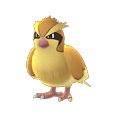 No.: #013
No.: #013
Type: Normal, Flying
Evolution: Pidgey evolves into Pidgeotto at level 18, which evolves into Pidgeot starting at level 36.
Rattata: Rattata is a s a Normal-type Pokémon.
 No.: #019
No.: #019
Type: Normal
Evolution: It evolves into Raticate starting at level 20.
Spearow: Spearow is a dual-type Normal/Flying Pokémon.
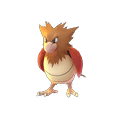 No.: #021
No.: #021
Type: Normal, Flying
Evolution: It evolves into Fearow starting at level 20.
Pikachu: Pikachu is an Electric-type Pokémon. Pikachu is also the starter Pokémon
 No.: #025
No.: #025
Type: Electric
Evolution: It evolves from Pichu when leveled up with high friendship and evolves into Raichu when exposed to a Thunder Stone.
Clefairy: Clefairy is a Fairy-type Pokémon. Prior to Generation VI, it was a Normal-type Pokémon.
 No.: #035
No.: #035
Type: Fairy
Evolution: Clefairy evolves from Cleffa when leveled up with high friendship and evolves into Clefable when exposed to a Moon Stone.
Jigglypuff: Jigglypuff is a dual-type Normal/Fairy Pokémon. Prior to Generation VI, it was a pure Normal-type Pokémon.
 No.: #039
No.: #039
Type: Fairy, Normal
Evolution: Jigglypuff evolves from Igglybuff when leveled up with high friendship and evolves into Wigglytuff when exposed to a Moon Stone.
Zubat: Zubat is a dual-type Poison/Flying Pokémon.
 No.: #041
No.: #041
Type: Poison, Flying
Evolution: Zubat evolves into Golbat starting at level 22, which evolves into Crobat when leveled up with high friendship.
Geodude: Geodude is a dual-type Rock/Ground Pokémon.
 No.: #074
No.: #074
Type: Rock, Ground
Evolution: It evolves into Graveler starting at level 25, which evolves into Golem when traded.
Magikarp: Magikarp is a Water-type Pokémon.
 No.: #129
No.: #129
Type: Water
Evolution: It evolves into Gyarados starting at level 20.
Pokémon Egg – 5 Kilometers Eggs or 5km Egg
Ekans: Ekans is a Poison-type Pokémon.
 No.: #023
No.: #023
Type: Poison
Evolution: It evolves into Arbok starting at level 22.
Sandshrew: Sandshrew is a Ground-type Pokémon.
 No.: #027
No.: #027
Type: Ground
Evolution: It evolves into Sandslash starting at level 22.
Nidoran♀: Nidoran♀ is a Poison-type Pokémon.
 No.: #029
No.: #029
Type: Poison
Evolution: Nidoran♀ evolves into Nidorina starting at level 16, which evolves into Nidoqueen when exposed to a Moon Stone.
Nidoran♂: Nidoran♂ is a Poison-type Pokémon.
 No.: #032
No.: #032
Type: Poison
Evolution: Nidoran♂ evolves into Nidorino at level 16, which evolves into Nidoking when exposed to a Moon Stone.
Vulpix: Vulpix is a Fire-type Pokémon.
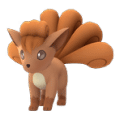 No.: #037
No.: #037
Type: Fire
Evolution: It evolves into Ninetales when exposed to a Fire Stone.
Oddish: Oddish is a dual-type Grass/Poison Pokémon.
 No.: #043
No.: #043
Type: Grass, Poison
Evolution: It evolves into Gloom starting at level 21, which evolves into Vileplume when exposed to a Leaf Stone or into Bellossom when exposed to a Sun Stone.
Paras: Paras is a dual-type Bug/Grass Pokémon.
 No.: #046
No.: #046
Type: Grass, Bug
Evolution: It evolves into Parasect starting at level 24.
Venonat: Venonat is a dual-type Bug/Poison Pokémon.
 No.: #048
No.: #048
Type: Bug, Poison
Evolution: It evolves into Venomoth starting at level 31.
Diglett: Diglett is a Ground-type Pokémon.
 No.: #050
No.: #050
Type: Ground
Evolution: It evolves into Dugtrio starting at level 26.
Meowth: Meowth is a Normal-type Pokémon.
 No.: #050
No.: #050
Type: Normal
Evolution: It evolves into Persian starting at level 28.
Psyduck: Psyduck is a Water-type Pokémon.
 No.: #054
No.: #054
Type: Water
Evolution: It evolves into Golduck starting at level 33.
Mankey: Mankey is a Fighting-type Pokémon.
 No.: #056
No.: #056
Type: Fight
Evolution: Mankey evolves into Primeape starting at level 28.
Growlithe: Growlithe is a Fire-type Pokémon.
 No.: #058
No.: #058
Type: Fire
Evolution: It evolves into Arcanine when exposed to a Fire Stone.
Poliwag: Poliwag is a Water-type Pokémon.
 No.: #060
No.: #060
Type: Water
Evolution: It evolves into Poliwhirl starting at level 25, which evolves into Poliwrath when exposed to a Water Stone or into Politoed when traded holding a King’s Rock.
Abra: Abra is a Psychic-type Pokémon.
 No.: #063
No.: #063
Type: Psychc
Evolution: Abra evolves into Kadabra starting at level 16, which evolves into Alakazam when traded.
Machop: Machop is a Fighting-type Pokémon.
 No.: #066
No.: #066
Type: Fight
Evolution: It evolves into Machoke starting at level 28, which evolves into Machamp when traded.
Bellsprout: Bellsprout is a dual-type Grass/Poison Pokémon.
 No.: #069
No.: #069
Type: Grass, Poison
Evolution: Bellsprout evolves into Weepinbell starting at level 21, which evolves into Victreebel when exposed to a Leaf Stone.
Tentacool: Tentacool is a dual-type Water/Poison Pokémon.
 No.: #072
No.: #072
Type: Water, Poison
Evolution: Tentacool evolves into Tentacruel starting at level 30.
Ponyta: Ponyta is a Fire-type Pokémon.
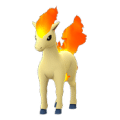 No.: #077
No.: #077
Type: Fire
Evolution: It evolves into Rapidash starting at level 40.
Slowpoke: Slowpoke is a dual-type Water/Psychic Pokémon.
 No.: #079
No.: #079
Type: Water,Psychc
Evolution: Slowpoke evolves into Slowbro starting at level 37 or Slowking when traded holding a King’s Rock.
Magnemite: Magnemite is a dual-type Electric/Steel Pokémon. Prior to Generation II, it was a pure Electric-type Pokémon.
 No.: #081
No.: #081
Type: Electric, Steel
Evolution: It evolves into Magneton starting at level 30, which evolves into Magnezone when leveled up.
Farfetch’d: Farfetch’d is a dual-type Normal/Flying Pokémon.
 No.: #083
No.: #083
Type: Normal, Flying
Evolution: It is not known to evolve into or from any other Pokémon.
Doduo: Doduo is a dual-type Normal/Flying Pokémon.
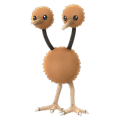 No.: #084
No.: #084
Type: Normal, Flying
Evolution: It evolves into Dodrio starting at level 31.
Seel: Seel is a Water-type Pokémon.
 No.: #086
No.: #086
Type: Water
Evolution: Seel evolves into Dewgong starting at level 34.
Grimer: Grimer is a Poison-type Pokémon.
 No.: #088
No.: #088
Type: Poison
Evolution: It evolves into Muk starting at level 38.
Shellder: Shellder is a Water-type Pokémon.
 No.: #090
No.: #090
Type: Water
Evolution: Shellder evolves into Cloyster when exposed to a Water Stone
Gastly: Gastly is a dual-type Ghost/Poison Pokémon.
 No.: #092
No.: #092
Type: Ghost, Poison
Evolution: It evolves into Haunter starting at level 25, which evolves into Gengar when traded.
Drowzee: Drowzee is a Psychic-type Pokémon.
 No.: #096
No.: #096
Type: Psychc
Evolution: It evolves into Hypno starting at level 26.
Krabby: Krabby is a Water-type Pokémon.
 No.: #098
No.: #098
Type: Water
Evolution: Krabby evolves into Kingler starting at level 28.
Voltorb: Voltorb is an Electric-type Pokémon.
 No.: #100
No.: #100
Type: Electric
Evolution: It evolves into Electrode starting at level 30.
Exeggcute: Exeggcute is a dual-type Grass/Psychic Pokémon.
 No.: #102
No.: #102
Type: Grass, Psychc
Evolution: It evolves into Exeggutor when exposed to a Leaf Stone.
Cubone: Cubone is a Ground-type Pokémon.
 No.: #104
No.: #104
Type: Ground
Evolution: Cubone evolves into Marowak starting at level 28.
Lickitung: Lickitung is a Normal-type Pokémon.
 No.: #108
No.: #108
Type: Normal
Evolution: Starting in Generation IV, it evolves into Lickilicky when leveled up while knowing Rollout.
Koffing: Koffing is a Poison-type Pokémon.
 No.: #109
No.: #109
Type: Poison
Evolution: It evolves into Weezing starting at level 35.
Rhyhorn: Rhyhorn is a dual-type Ground/Rock Pokémon.
 No.: #111
No.: #111
Type: Ground, Rock
Evolution: Rhyhorn evolves into Rhydon starting at level 42, which evolves into Rhyperior when traded holding a Protector.
Tangela: Tangela is a Grass-type Pokémon.
 No.: #114
No.: #114
Type: Grass
Evolution: It evolves into Tangrowth when leveled up while knowing Ancient Power.
Kangaskhan : Kangaskhan is a Normal-type Pokémon.
 No.: #115
No.: #115
Type: Normal
Evolution: Known to evolve into or from any other Pokémon, it can Mega Evolve into Mega Kangaskhan using the Kangaskhanite
Horsea: Horsea is a Water-type Pokémon.
 No.: #116
No.: #116
Type: Water
Evolution: Horsea evolves into Seadra starting at level 32, which evolves into Kingdra when traded holding a Dragon Scale.
Goldeen: Goldeen is a Water-type Pokémon.
 No.: #118
No.: #118
Type: Water
Evolution: It evolves into Seaking starting at level 33.
Staryu: Staryu is a Water-type Pokémon.
 No.: #120
No.: #120
Type: Water
Evolution: It evolves into Starmie when exposed to a Water Stone.
Tauros: Tauros is a Normal-type Pokémon.
 No.: #128
No.: #128
Type: Normal
Evolution: Tauros is not known to evolve into or from any other Pokémon.
Porygon: Porygon is a Normal-type Pokémon.
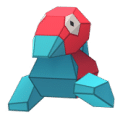 No.: #137
No.: #137
Type: Normal
Evolution: Porygon evolves into Porygon2 when traded holding an Up-Grade, which evolves into Porygon-Z when traded holding a Dubious Disc.
Pokémon Egg – 10 Kilometers Eggs or 10km Egg
Onix: Onix is a dual-type Rock/Ground Pokémon.
 No.: #095
No.: #095
Type: Rock, Ground
Evolution: It evolves into Steelix when traded holding a Metal Coat.
Hitmonlee: Hitmonlee is a Fighting-type Pokémon.
 No.: #106
No.: #106
Type: Fight
Evolution: Hitmonlee evolves from Tyrogue starting at level 20 when Tyrogue’s Attack is higher than its Defense.
Hitmonchan: Hitmonchan is a Fighting-type Pokémon.
 No.: #107
No.: #107
Type: Fight
Evolution: Hitmonchan evolves from Tyrogue starting at level 20 when Tyrogue’s Defense is higher than its Attack.
Chansey: Chansey is a Normal-type Pokémon.
 No.: #113
No.: #113
Type: Normal
Evolution: It evolves from Happiny when leveled up holding an Oval Stone during the day and evolves into Blissey when leveled up with high friendship.
Mr. Mime: Mr. Mime is a dual-type Psychic/Fairy Pokémon. Prior to Generation VI, it was a pure Psychic-type Pokémon.
 No.: #122
No.: #122
Type: Psychc, Fairy
Evolution: It evolves from Mime Jr. when leveled up while knowing Mimic.
Scyther: Scyther is a dual-type Bug/Flying Pokémon.
 No.: #123
No.: #123
Type: Bug, Flying
Evolution: Scyther evolves into Scizor when traded holding a Metal Coat.
Jynx: Jynx is a dual-type Ice/Psychic Pokémon.
 No.: #124
No.: #124
Type: Ice, Psyche
Evolution: It evolves from Smoochum starting at level 30.
Electabuzz: Electabuzz is an Electric-type Pokémon.
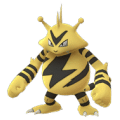 No.: #125
No.: #125
Type: Electric
Evolution: Electabuzz evolves from Elekid starting at level 30 and evolves into Electivire when traded holding an Electirizer.
Magmar: Magmar is a Fire-type Pokémon.
 No.: #126
No.: #126
Type: Fire
Evolution: It evolves from Magby starting at level 30 and evolves into Magmortar when traded holding a Magmarizer.
Pinsir: Pinsir is a Bug-type Pokémon.
 No.: #127
No.: #127
Type: Bug
Evolution: Pinsir is not known to evolve into or from any other Pokémon, it can Mega Evolve into Mega Pinsir using the Pinsirite.
Lapras: Lapras is a dual-type Water/Ice Pokémon.
 No.: #131
No.: #131
Type: Water, Ice
Evolution: It is not known to evolve into or from any other Pokémon
Eevee: Eevee is a Normal-type Pokémon.
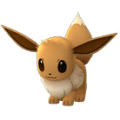 No.: #133
No.: #133
Type: Normal
Evolution: Can evolve into one of eight different Pokémons types.
Omanyte: Omanyte is a dual-type Rock/Water Fossil Pokémon.
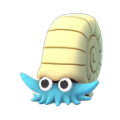 No.: #138
No.: #138
Type: Rock, Water
Evolution: It is resurrected from a Helix Fossil and evolves into Omastar starting at level 40.
Kabuto: Kabuto is a dual-type Rock/Water Fossil Pokémon.
 No.: #140
No.: #140
Type: Rock, Water
Evolution: Kabuto resurrected from a Dome Fossil and evolves into Kabutops starting at level 40.
Aerodactyl: Aerodactyl is a dual-type Rock/Flying Fossil Pokémon.
![]() No.: #142
No.: #142
Type: Rock, Flying
Evolution: It is resurrected from an Old Amber, and while is not known to evolve into or from any other Pokémon, it can Mega Evolve into Mega Aerodactyl using the Aerodactylite.
Snorlax: Snorlax is a Normal-type Pokémon.
 No.: #143
No.: #143
Type: Normal
Evolution: It evolves from Munchlax when leveled up with high friendship.
Dratini: Dratini is a Dragon-type Pokémon.
 No.: #143
No.: #143
Type: Normal
Evolution: Dratini evolves into Dragonair starting at level 30, which evolves into Dragonite starting at level 55.
That’s it on Pokemon Go Eggs Guide – hatching Pokemon Eggs, required distances to hatch Pokemon GO Eggs, as well as Pokemon GO Egg Chart-how to predict What kind of Pokémon you will get from eggs.
Last Updated on April 23, 2018.
Related Pokémon Go Posts:
Pokemon Go Maps – List of Maps to Locate and Catch Pokemon
How to Fix Pokemon Go Crashes on Android and iPhone
How to Sign Up for Pokémon Go or Login Pokémon Go
How To Join Gym in Pokemon Go and become the Gym Leader
How To Play Pokémon Go – A Complete Begin
Sources: bulbapedia.bulbagarden.net and serebii.net



Pingback: Pokemon GO APK Download for Android & iPhone (all Countries)
Pingback: Pokemon Go Medals List : How to Unlock Bronze, Silver and Gold